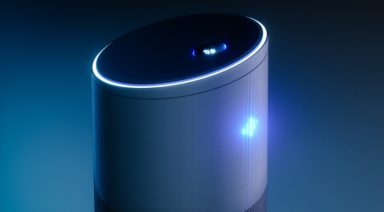This Autonomous Robot Can End Mass Spraying of Herbicide on Crops

While some worry of the impending threat robots may have on humanity, some good news concerning artificial intelligence is here, and it may be the undoing of large agrochemical manufacturers. Soon a particular type of robot may become commonplace on farms, scouring crops for weeds and eliminating the need to spray large amounts of toxic herbicide on our food.
The Swiss startup, ecoRobotix, has developed a solar-powered, autonomous robot that combs through fields, detecting where weeds are growing, before directly delivering a micro-dose of herbicide to their roots. The bot can run on its own for 12 hours without emitting pollution and is easily transportable.
Current farming practices rely on universal herbicides, such as Monsanto’s Roundup and its genetically modified crops capable of withstanding Roundup. But these herbicides and GMOs have been proven to be highly toxic, despite their rampant use.
With these new robots, precise applications of herbicides can ensure that fewer toxins are being applied to crops while also saving farmers money. The company believes its technology could reduce the amount of herbicide farmers use by twentyfold.
The robot’s physical design is relatively simple: solar panels are mounted to wheels, with a camera, and arms on its undercarriage that extend to direct a swift, targeted spray of herbicide to individual plants. The company says this precision application leaves no herbicide on the crops themselves and preserves the life of the soil, while minimally impacting it from the lightweight design.

Farmers can control the robot from a smartphone, allowing them to redirect it to other areas where it can then work on its own. The company says their bot will even adapt its speed based on the number of weeds it detects.
There are other companies working on this technology other than ecoRobotix, including one bought by the John Deere tractor company. This type of technology threatens the exorbitant profits made by companies like Monsanto, Bayer, and DowDupont, who reap billions selling herbicides that are indiscriminately sprayed on crops worldwide.
Unsurprisingly, these major agrochemical companies are working to get their hands on this technology. Bayer says it’s not concerned with its business model of being a volume seller of herbicides, though its acquisition of Monsanto could make that model’s vulnerability more of a reality. The global market for herbicides is about $26 billion, of which Bayer and Monsanto earn 34 percent.
In the meantime, prototypes for these autonomous robots are still being fine-tuned, but ecoRobotix says it plans on having them ready for market by early next year. And for now, the robot revolution looks a little less ominous.
Should We Be Hesitant to Embrace Transhumanism?

The human body has somewhere in the vicinity of 50 to 100 trillion cells, depending on who you ask. Each of these cells has .07 volts of electrical energy potential — a relatively small number you might say. But when you multiply those .07 volts times 50 to 100 trillion, you get somewhere between two and a half, to five trillion volts. We are powerhouses of electrical energy potential.
Yet for some, this potential isn’t enough. In the minds of transhumanists, the body is a work in progress — one in which we must actively improve toward some perceived ideal. In some circumstances they may be right; our bodies are not all created equally, some face deformities and defects, or aren’t built as sturdy as others, making a good argument for the need to artificially augment.
But according to researcher and author Gregg Braden, this is a slippery slope — one in which we must tread with caution while appreciating the truly high-tech construction of the biological suits we’ve found ourselves born into.
“All of the technology that is now being developed in the world around us, and I worked in the Cold War years in the defense industry, space-based lasers, ‘Star Wars’ Defense Initiative… and I have yet to this moment, seen any tech in the world around us that does not mimic what we already do in our cells, except our cells do it better,” Braden said in a recent interview with Regina Meredith on Open Minds.
With advancements in microchip technology, futurists envision a world in which we begin to work toward almost complete integration with technology and computers. Some even go so far as to believe we will one day be capable of transferring our consciousness onto a hard drive composed of microscopic silicon chips, experiencing the world through that mechanistic, binary scope of the computer — potentially allowing humans to achieve something that looks like immortality.
But this reductionist mindset of the materialist, scientific lens is incredibly arrogant, Braden said.
Firstly, science’s “hard problem of consciousness” currently limits it from understanding what exactly consciousness is and where it comes from. And secondly, would this really even be the same kind of consciousness? Can you separate consciousness from our biological nature? And if you could, why would you?
Those are the two trains of thought when it comes to the views of our advancing technology and the transhumanist movement, Braden said.
One side views it as, “If we were never supposed to learn how to achieve such a feat, why have we gotten this far?”
While the other side says, “Just because we can, doesn’t mean we should.”




































